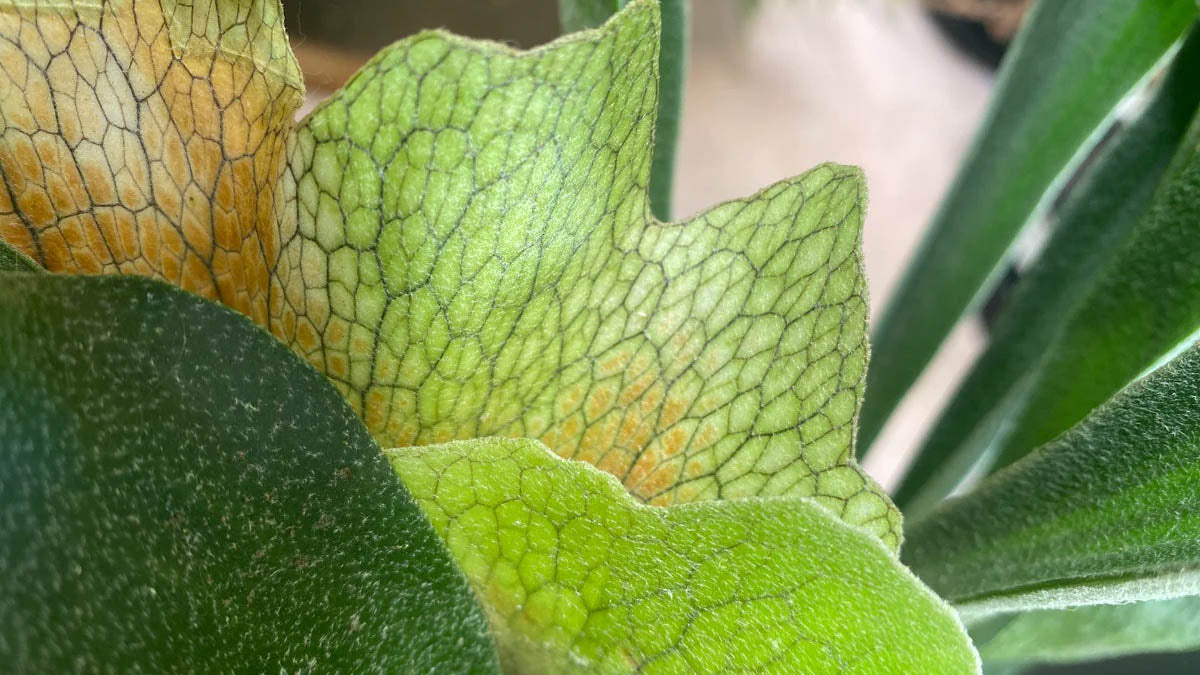All About Epiphytes

Epiphyte: Greek origin, Epi: meaning 'upon' and phyton: meaning 'plant'. Instead of growing in the soil, epiphytes prefer to use their sticky roots to cling to existing plants, absorbing nutrients from plant and animal debris, and absorbing rain water and moisture using their roots and leaves.
Now, you may think that you haven't seen many epiphytes before, but if you're a lover of indoor plants, or even if you just have a few, chances are some of them are actually epiphytic! Hoya, orchids, ferns, and many succulent varieties are epiphytic, as well as philodendrons, monstera and pothos which are semi epiphytic. The more you know, right?
The Epiphyte Family
There are a few different kinds of epiphytes. Plants like orchids and bromeliads are holo-epiphytes, which means they live their whole lives snuggling up to their host plant, blooming in the sun of the forest canopy. There's also holo-epiphytic succulents, like orchid cactus and christmas cactus, which are a kind of jungle cactus. Then theres plants like monstera and pothos. They are secondary hemi-epiphytes, starting their life on the rainforest floor and slowing making their way up to the top of their host plant, then can eventually losing their connection with the ground. These plants develop 'fenestrations' as they mature, which is theorised to help the lower leaves receive more light.

A mature golden Pothos with developed fenestrations.
Roots!
Almost all epiphytic plants live in tropical rainforest conditions, where theres a limitless supply of humidity. This means that they can use their roots to absorb that moisture easily. Some even have special leaves that can absorb the humidity too! This humidity means that even holo-epiphytes can happily live on a host plant, without having to harm it.
Epiphytes also use their roots to cling onto their host plant. These are called aerial roots, and anchor the plant, helping it climb higher and higher to reach those juicy sun rays! For some special epiphytes like orchids, their roots actually contain chlorophyll and can photosynthesise!

A Phalaenopsis Orchid using its aerial roots to attach to a tree.
Epiphytes use their aerial roots to absorb nutrients, but it's not just their roots they use to do this. Different epiphytes have different ways of getting those essential nutrients so they can grow big and strong! Bromeliads create a watertight funnel between their leaves, so insects, rain and plant debris get stuck between, making a sort of "plant soup" which they can then absorb. Staghorn ferns create a sort of lid called a basal frond over the front of their body, which they use to trap plant litter (please don't cut their basal frond off!). They effectively make a little pot for themselves ! And finally, tillandsia (or air plants) have tiny little trichomes that they use to grab passing debris, as well as moisture from the air.

A staghorn with it's developing basal frond and an older basal frond.
Taking Them Home
So you might be wondering, what happens when I bring these complicated sounding plants home? Can I plant them like I would any other houseplant? Thankfully, for most, the answer is yes, although for your plant to be living it's best life you might want to be more specific with the medium you plant it in. Plants like philodendrons (which have an extensive list of different species), ferns, and pothos are happy to be planted in your bulk standard indoor potting mix. If you'd like to be bougie with your plants living quarters though, epiphytes love a good chunky aroid soil, which usually consists of some well draining mediums like perlite, orchid bark, and coco coir. You can find these pretty easily at most hardware stores, and mix them together with your desired quantities.

An example of different mediums for an epiphyte potting mix.
If you're keen to get even more involved in simulating your epiphyte's natural environment, you can look into mounting them. Plants such as staghorn ferns love this, and you can even mount them to a tree outside where they can grow into a huge specimen! Or if that's not your style, you can also make them into a kokedama, which is a Japanese technique for potting plants where you wrap the root ball in a layer of spagnum moss.

A collection of epiphytes in kokedamas (from a shop install we did a while back).
For holo-epiphytes like monstera and philodendrons, they can seriously benefit from a moss pole or stake as they mature. This allows them to grab onto a surface and grow up it instead of flopping to the floor (which looks especially strange with a large-leafed plant like a monstera). Tree fern poles or spagnum moss poles are our personal recommendation.

A gorgeous mature monstera on a pole.
For your more fussy epiphytes, like tillandsia or orchids, you'll need to be more careful with what you plant them into. Tillandsia, because she likes to be different, doesn't want to be in any soil at all! They simply just want to be submerged in water and soaked for a few minutes every now and then, simulating their rather extreme epiphytic environment. Orchids love to be planted in a barky medium, so their roots can cling onto the wood and have plenty of air flow throughout. They can also benefit from a clear pot so that their roots can do their awesome photosynthesising!
Most epiphytes appreciate being kept consistently moist, but not wet. Water when the top inch or so is starting to go dry, and you should be okay. For orchids, the bark will start to get lighter in colour, or if you have a 'photosynthesising roots' type of orchid like Phalaenopsis, the roots will become a lighter mint green colour. Water through, avoiding getting water in the leaves, and allow to soak for about ten minutes before removing excess water. Plants like jungle cactus like a little less water, so water when the top couple inches of soil have become dry.
Finally, mist these babies!!! Since they pretty much all come from a tropical environment, they love humidity, and like we said before, some can even absorb moisture through their leaves.
We hope you learned something, and feel better equipped to take the best care of your epiphyte babies that you can!
Happy Planting!
